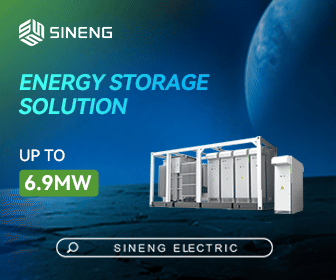The 2017 Energy Storage Market, In Review
The energy storage market is in a constant state of change due to a continuous stream of updates to technology. One of the greatest opportunities in storage technology development today is the manufacturing scale that it derives from the automotive market, which has historically been ten times the size of the stationary storage market. A single automotive program may represent ten to thirty gigawatt hours of battery production over a three to five year period; if a battery manufacturer is also a supplier to the energy storage markets, the energy storage market benefits from this volume pricing.
 As a result, the energy storage market has reached a level of cost and maturity that many may not realize. Li-ion battery cell costs have dropped from near $1,200/kWh in 2008, to less than $200/kWh in 2017 - a nearly 10 times decrease in price over the last ten years. Over 95 percent of the present energy storage market is being met by Li-ion battery solutions. This price reduction trend follows the same pattern witnessed in other industries such as semiconductors, smart phones and solar panels. This should give some comfort that the trend is not likely to reverse, since it is driven by cumulative experience and scale, which are sustainable due to the electric vehicle and stationary storage link. A major sensitivity factor to overall cost at the system level is the experience of engineering, procurement and construction (EPC) providers. If the EPC has good control of the supply chain, the turnkey, interconnected and AC system cost can be achieved at $500/kWh or less. This is true for both Li-ion and many flow battery technologies today. Flow batteries still enjoy the long term cost advantage they have established since their first commercialization; however, the Li-ion price curve is decreasing at a sharper slope and is overtaking flow batteries presently.
As a result, the energy storage market has reached a level of cost and maturity that many may not realize. Li-ion battery cell costs have dropped from near $1,200/kWh in 2008, to less than $200/kWh in 2017 - a nearly 10 times decrease in price over the last ten years. Over 95 percent of the present energy storage market is being met by Li-ion battery solutions. This price reduction trend follows the same pattern witnessed in other industries such as semiconductors, smart phones and solar panels. This should give some comfort that the trend is not likely to reverse, since it is driven by cumulative experience and scale, which are sustainable due to the electric vehicle and stationary storage link. A major sensitivity factor to overall cost at the system level is the experience of engineering, procurement and construction (EPC) providers. If the EPC has good control of the supply chain, the turnkey, interconnected and AC system cost can be achieved at $500/kWh or less. This is true for both Li-ion and many flow battery technologies today. Flow batteries still enjoy the long term cost advantage they have established since their first commercialization; however, the Li-ion price curve is decreasing at a sharper slope and is overtaking flow batteries presently.
An important consideration when evaluating cost is the lifetime cost. A Li-ion solution will require an ongoing operations and maintenance (O&M) cost which can prolong the project indefinitely if the replacements are included in this O&M cost. When comparing cost, the capital cost is one item, but the ongoing project cost is another. Overall, the ongoing O&M cost may be proportionally small to the capital cost depending on the project. More importantly, the O&M cost is an enabler to project finance because it addresses issues like warranty risk or performance guarantees. An important consideration for the developer is whether there are variable O&M costs that may be introduced if the project changes function mid-life. Capacity maintenance agreements, warranties, and performance guarantees have advanced to a level of sophistication comparable to wind and solar guarantees. There are now insurance products on the market to backstop risks associated with the fulfillment of these guarantees.
As cost reduces, the flexibility of storage to enter new markets increases. The established energy storage models today are  several. In states where rate-based energy storage programs exist for utilities (such as the resource adequacy agreement in California which resulted from the 1.3 GW energy storage mandate outlined in Assembly Bill AB2514) the business model is clear and a bankable revenue stream from a credit worthy off-taker is established. The PJM Independent System Operator is sometimes credited with kickstarting the early commercial storage market, with its payments for fast responding resources that followed the Reg D frequency regulation signal. At the beginning of 2017, the signal changed to a more aggressive profile that has forced developers to adapt their solutions. The Reg D revenue stream remains bankable, but whether it is enough by itself to finance a project remains a question. If the revenue can be coupled with another revenue stream, the business models are interesting.
several. In states where rate-based energy storage programs exist for utilities (such as the resource adequacy agreement in California which resulted from the 1.3 GW energy storage mandate outlined in Assembly Bill AB2514) the business model is clear and a bankable revenue stream from a credit worthy off-taker is established. The PJM Independent System Operator is sometimes credited with kickstarting the early commercial storage market, with its payments for fast responding resources that followed the Reg D frequency regulation signal. At the beginning of 2017, the signal changed to a more aggressive profile that has forced developers to adapt their solutions. The Reg D revenue stream remains bankable, but whether it is enough by itself to finance a project remains a question. If the revenue can be coupled with another revenue stream, the business models are interesting.
In other markets, the revenue streams are not as clear, or are still being developed. Massachusetts presently has an energy storage target and a fund for grants to help kickstart energy storage projects. New York's Reforming the Energy Vision (REV) proceedings are rebuilding the energy markets from the ground up, with the most recent proposal of a Value of Distributed Energy Resources (VDER) stack that places value (and eventual payment structures) on virtual power plants using storage coupled with renewable or efficient DER. A notable part of the VDER is a payment mechanism that recognizes the value of deferred distribution upgrades, which the VDER stack identifies as "avoided D." This is one of the first instances where the internal utility value of deferred capital investment is translated to an external market value. In areas with a high cost of energy and high demand charges, energy storage coupled with solar can make sense for residential, commercial and industrial (C&I) and municipal or community customers who are willing to sign long term power purchase agreements (PPAs).  As a result, many solar developers are adding energy storage to their solar projects today even if the short-term revenue structures for energy storage are not yet defined. By taking this risk, developers are getting storage "in the ground" and ready for the inevitable new markets that will open during the project lifetime.
As a result, many solar developers are adding energy storage to their solar projects today even if the short-term revenue structures for energy storage are not yet defined. By taking this risk, developers are getting storage "in the ground" and ready for the inevitable new markets that will open during the project lifetime.
Another notable advancement in energy storage is the software platforms that enable stacking of different revenue structures. The simplest energy storage projects need only respond to a single control signal if the revenue associated with that signal is enough to make the business case alone. However, in complex markets where numerous potential revenue streams exist, the project viability depends critically on the success of the controls. Controls enable complex business models, such as serving a utility function (such as resource adequacy or frequency regulation) while also serving a demand charge reduction for a behind the meter customer, for example. Controls are what make behind the meter solutions a utility solution, in aggregate.
Energy storage is commercial today, cheaper than most people realize and has viable business models in many markets. For the clean energy development community, there is no reason to wait for the energy storage opportunity. It is already here.
 Davion M. Hill, Ph.D. is Energy Storage Leader, North America at DNV GL. He served as the former president and chairman of NAATBatt International, and is a Board Member at NYBEST.
Davion M. Hill, Ph.D. is Energy Storage Leader, North America at DNV GL. He served as the former president and chairman of NAATBatt International, and is a Board Member at NYBEST.
DNV GL | www.dnvgl.com









